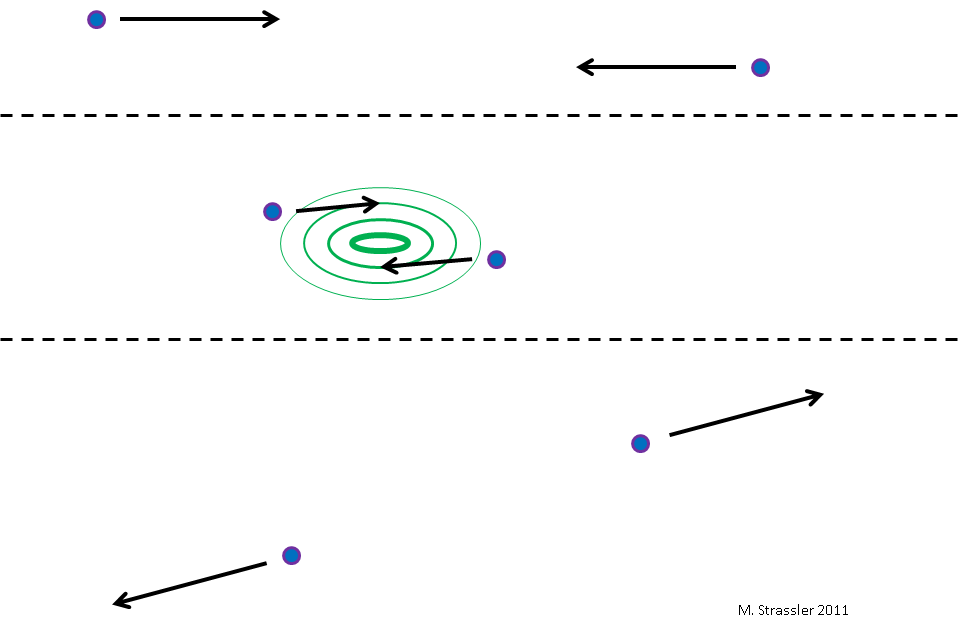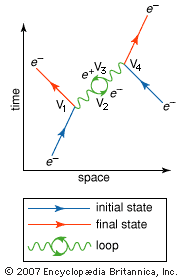Oh, sometimes things just piss me off. Take “virtual particles” from physics. Please. Eliminate them. They are neither necessary nor helpful.
“Virtual” means “non-existent” or “fake”. They are not particles.
Here’s a Feynman diagram for two electrons repelling each other. Take a look at it. It contains no less than four virtual particles.
The electron on the left, sensing the approach of the electron on the right, emits a virtual photon, the recoil of so doing forces it to change trajectory.
How did it know?
How did it get the trajectory exactly correct?
Emitting a photon makes the electron on the left lose energy and change spin.
The highly energetic virtual photon splits into a virtual electron-positron pair.
Why?
The virtual electron should be repelled by the real electrons, and attracted to its counterpart. This mostly cancels out to an attraction to its counterpart.
The virtual positron should be attracted to both the real electrons and its counterpart. This mostly cancels out to an attraction to its counterpart.
The real electrons should be attracted to the virtual positron, and repelled by the virtual electron. This mostly cancels out.
The virtual electron-positron pair recombine, releasing a highly energetic virtual photon.
The annihilation happens at the right place and time to conserve momentum and send the new virtual photon in exactly the right direction.
The creation-annihilation takes time. How did the sending electron know this random reaction would take place, and adjust the trajectory of its virtual photon accordingly, before it happened by pure chance?
The virtual photon continues on just the exactly correct trajectory to impact the electron on the right, forcing it to alter its momentum.
The electron on the right gains energy and changes spin.
In the end, the electrons are repelled from each other. Both change spin. The one on the left loses energy and slows down, while the one on the right gains energy and speeds up.
Which one loses energy and which one gains is randomly determined. The reaction can go either way.
Therefore, the reaction actually goes both ways, with a 50% probability of each, so it all balances out.
Yes, physicists actually believe that.
So what really happens when two electrons approach each other? The field gradients alter their trajectories, without any direct interaction necessary. The Feynman diagram with all its virtual whatsits is a mathematical tool for describing statistical outcomes of waves and ripples in fields, not details of actual events.


No comments:
Post a Comment
I reserve the right to remove egregiously profane or abusive comments, spam, and anything else that really annoys me. Feel free to agree or disagree, but let's keep this reasonably civil.